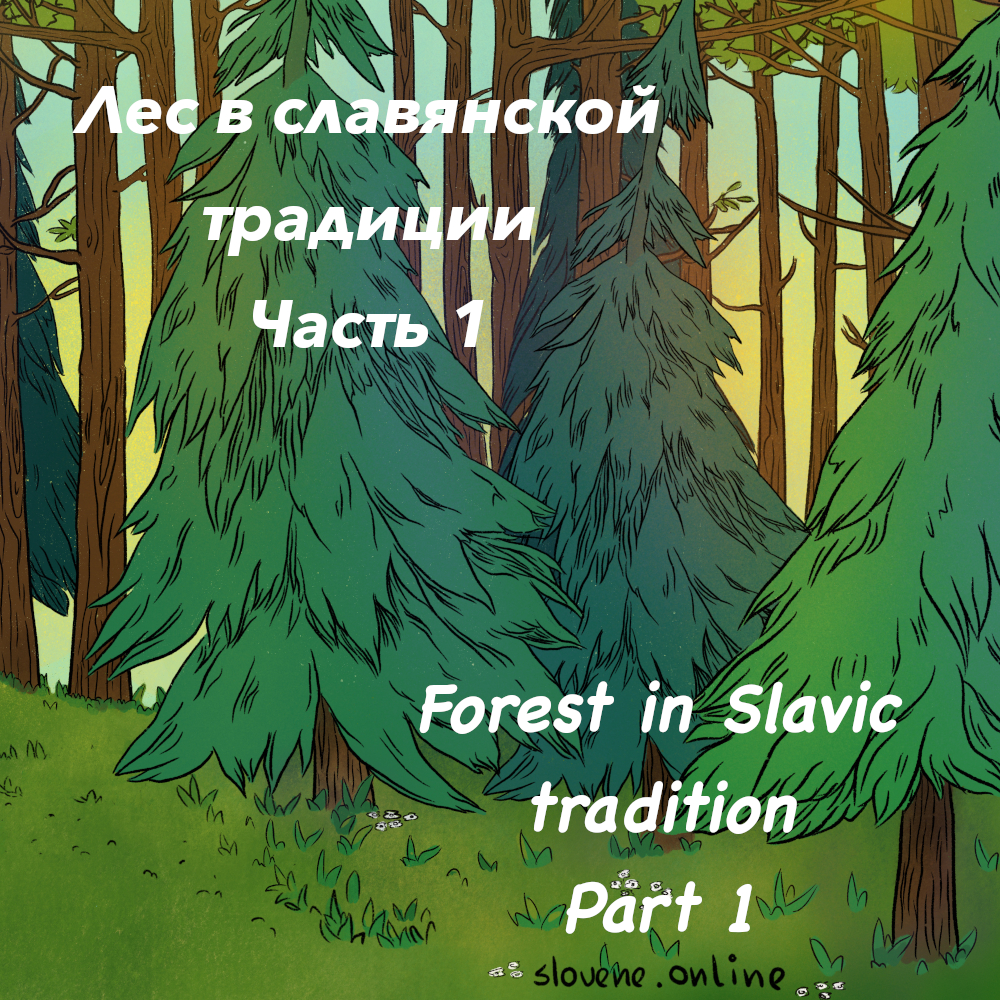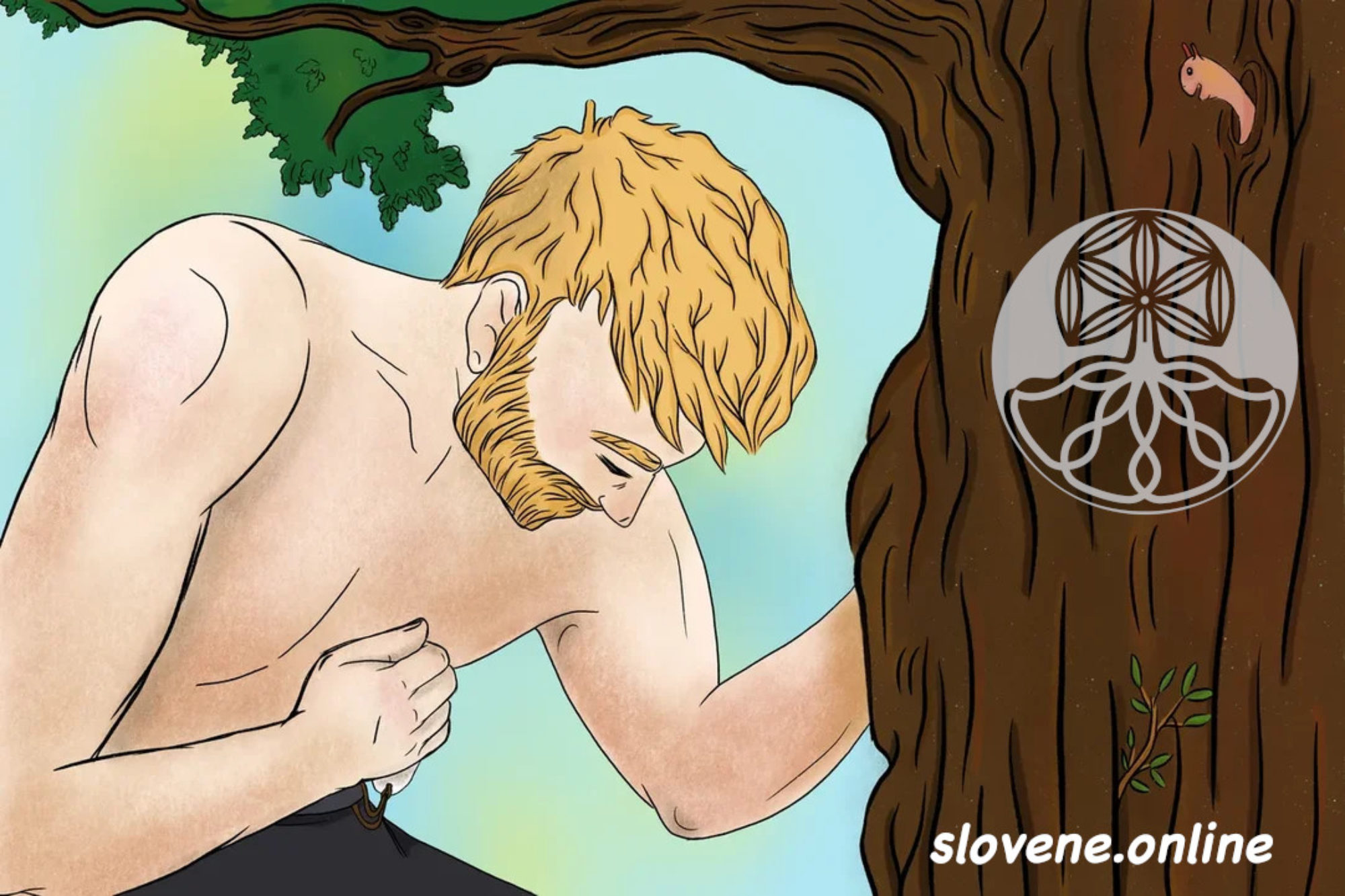Bast shoes (lapti) were known mainly among the Eastern Slavs. They have been used in a variety of ceremonies and rituals. Water from bast shoes was given to a woman in labor to facilitate childbirth. Before the wedding in the southern Russian regions, the groom personally wove holiday bast shoes for his chosen one. Bast shoes could be a wedding gift to the bride or a gift to a girl in matchmaking (if she accepted them, this was a sign of agreement).
ꏍ
Bast shoes woven in a special way were put on the dead. Slavs believed that these shoes protect from evil spirits and prevent deceased from turning into a vampire. Even when Slavs no longer wore bast shoes in everyday life, they still preferred to put them on the deceased, instead of boots – because boots had “a lot of iron”, which would make it hard for a deceased to walk in the “other world”.
ꏍ
Ukrainians and Belarusians destroyed old bast shoes in Kupala bonfires along with other old utensils. And in the Bryansk region, on Kupala night, people hung bast shoes on a high pole and burned the entire structure while singing Kupala songs.
ꏍ
Do you see bast shoes are being used in our time anywhere outside of the museums?
ꏍ
To be continued…
ꏍ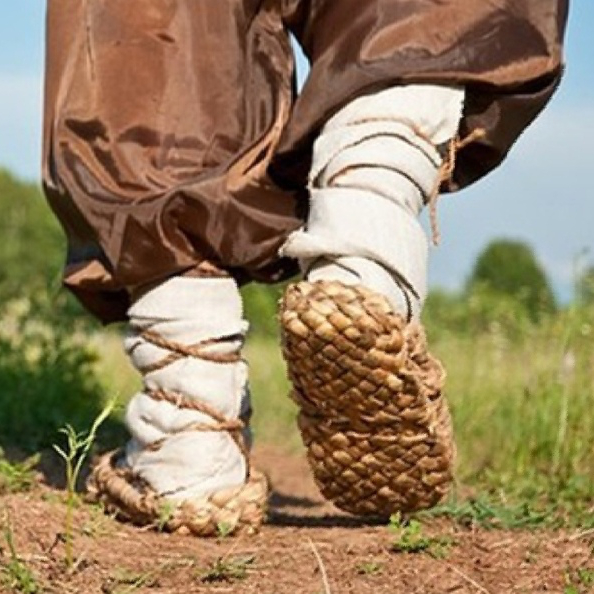
Pants in Slavic tradition – Part 1
Pants today are a common attribute of clothing for adults and children, but this was not always the case. According to Slavic tradition, both girls and boys wore only a long shirt up to 5-8 years old.
ꏍ
The boys were given their first pants as a symbol of maturity and coming into an age. Usually, this was coincided with a big holiday. For example, in Serbia, the boys would put on their first pants and tie them with a belt on St. George’s Day (Ђурђевдан), which was a celebration of fertility and marked the final awakening of nature and the beginning of the agriculture season. In Bulgaria, the boys received a special blessing for wearing pants from their godfather. The Russians believed that making the first pants could predetermine the fate of a child. Therefore, the mother had to make the first pants for her son in one sitting, so that he would subsequently be successful in all his affairs, got easily engaged with a bride, etc.
ꏍ
Pants often served as a talisman. In Polesie region, to protect livestock from plague, people would drag pants along the spine of an animal. On the Kupala night, pants were hung on the gates to protect home against witches. Eyes of pigs and cows were rubbed with men’s pants, so they would not be afraid of any curse.
ꏍ
In the Yaroslavl region, if a woman had newborn children dying, then the “midwife babka” was to ensure that the next child was delivered directly into the father’s pants so that baby would have a long life. In some other places, among Russians, it was customary immediately after birth to wrap a child in dirty father’s pants so that he would be healthy and enjoy the love of his father in the future.
ꏍ
To be continued…
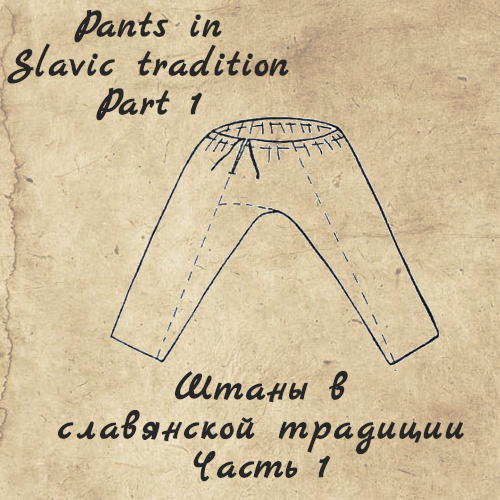
Forest in the Slavic tradition – Part 2.
Numerous traditional medicine magical practices are associated with the forest. Also, the forest is the habitat of demons and the place where people interact with “dark forces”. In order to find out the cause of an illness from the Leshy, the healers in Olonets region went to the forest, found a rowan tree, split its trunk in half and left inside a letter for Leshy with questions.
ꏍ
We continue to familiarize you with the customs and beliefs of the ancient Slavic people, while working on the animated fantasy comic book series. In such posts, as if jumping forward in time, we shed light upon and help to understand the events that will occur in our story … 😉
ꏍ
In the Northern Russia, on the day of Ivan Kupala, before sunrise, women went into the forest and made a “treasured” broomstick, which brought prosperity to the house. According to the beliefs of Slavs of Polish Pomerania, a person who dares to go into the forest on Easter night, approach a birch tree going backwards, and then break a branch – will get a magic wand.
ꏍ
The question of gathering herbs in the forest on Kupala night in the XVII century was included in the Christian confession: “Did you dance or do anything outrageous before the John the Baptist holiday? Did you go to the forest to collect herbs and roots?” (Almazov A. “Secret Confession in the Orthodox Eastern Church”, 1894)
ꏍ
Source: “Slavic Antiquities” – encyclopedic dictionary in 5 volumes by Institute for Slavic Studies of the Russian Academy of Sciences.
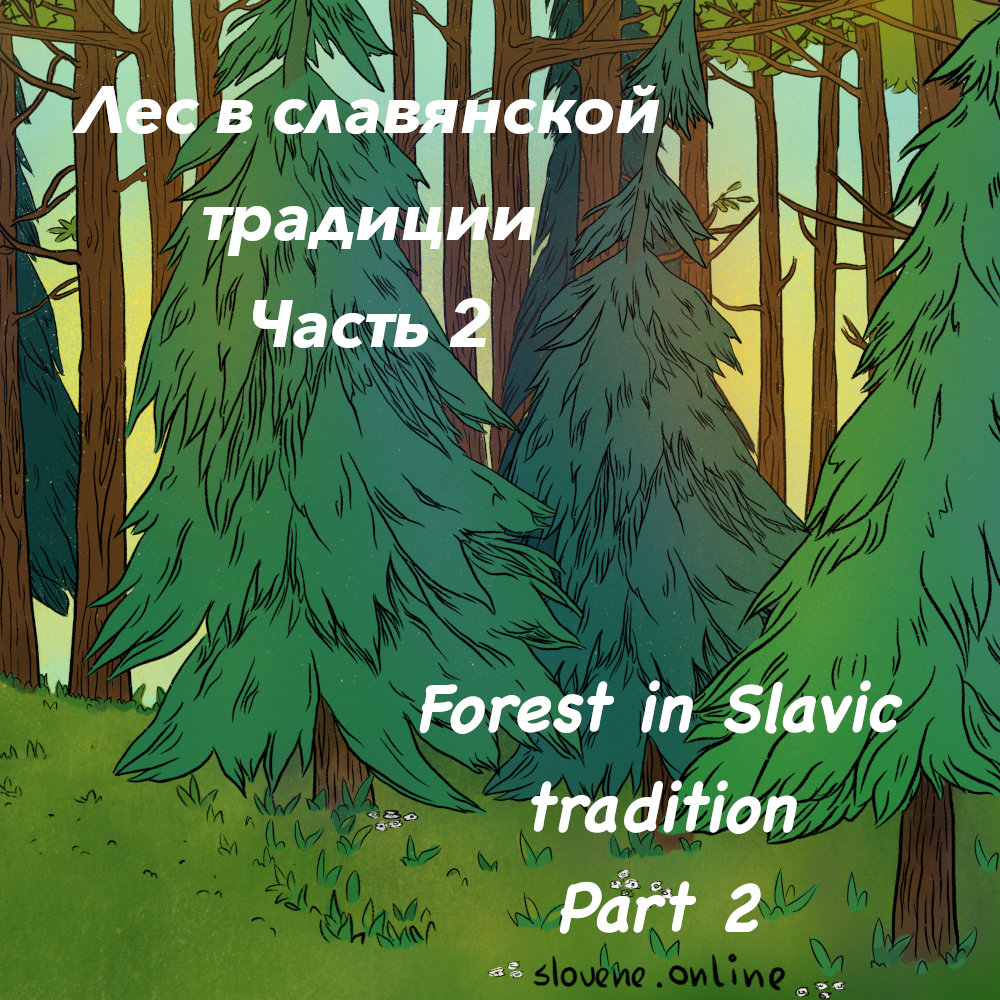
Forest in the Slavic tradition – Part 1.
The forest stood right outside the yard fence of our ancient Slavic ancestors. Forest provided food and clothing, tools and household items were made of wood. In many ways, the forest determined the way of life of the Slavic tribes. At the same time, it was considered as remote, impassable and vast place. In their beliefs, the Slavs opposed the forest to the home, associated it with “the other world” and saw it as the habitat of the Forest Master (Leshy) and other mythological creatures.
ꏍ
The forest was a place of miracles and esoteric rituals. According to the Slavic tales, deep in the forest, as far from human settlements as possible, a magical fern flower can be found: “If you want to do sorcery, you have to go deep into the forest on Kupala night, far away from the settlement, so no rooster cry can be heard… And if the fern flower blooms and you grab it … then anything you can think of can be done. But all evil”.
ꏍ
To be continued…
